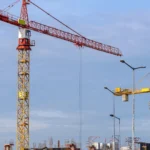Tacoma's Revitalization
Tacoma is a beacon of progressive revitalization and sustainable economic development in the Pacific Northwest. Driven by the unwavering commitment of the Community and Economic Development Department, Tacoma is harnessing a wave of transformative projects and policy initiatives that are shaping its future.
At the core of the city's vision lies a dynamic approach that blends environmental stewardship with economic vitality, ensuring that the steps toward growth also respect the delicate balance of its urban ecosystem.
With its Green Economic Development Strategy, Tacoma positions itself as a leader in integrating sustainable practices into the fabric of its economic ambitions. This forward-thinking strategy is not merely an abstract commitment to environmental principles but a concrete action plan that prepares the local workforce for burgeoning job opportunities in the green sector. Tacoma is setting a benchmark for cities seeking to marry ecological responsibilities with economic prospects by fostering an economy that places a premium on sustainability.
The Economic Development Services Division is another pillar in Tacoma's quest for community prosperity. Tasked with the critical mission of nurturing existing businesses while attracting new ventures, the division catalyzes the creation of a robust economic environment. Within this environment, Tacoma thrives, offering an inclusive array of opportunities for residents and investors, contributing to a higher quality of life for all.
Complementing these efforts, the Economic Development Board for Tacoma-Pierce County actively advocates for regional development. By championing the area as a prime destination for business establishment and expansion, the board significantly contributes to the community's economic momentum. Moreover, housing has emerged as a focal point of Tacoma's strategic endeavors.
The Housing Services division dedicates itself to ensuring that affordable housing is not a mere aspiration but a tangible reality for its residents. Through partnerships and prudent use of federal, state, and local resources, it works tirelessly to construct and preserve living spaces that meet the needs of low and low-income households.
A community's heartbeat is often found in its neighborhoods, which Tacoma recognizes. Through town hall discussions, the city facilitates an exchange between the government and its citizens, discussing the nuanced interplay between neighborhood development, public safety, and sustainable growth. These dialogs are instrumental in ensuring the community's voice is heard and integrated into the city's planning and actions.
Tacoma's dedication to revitalization is perhaps most emblematic in the metamorphosis of the Tacoma Town Center. The city envisions this project as a cornerstone for economic and social interaction, where business and leisure coalesce to foster a thriving downtown milieu.
Similarly, the stewardship of historical sites is a testament to Tacoma's commitment to preserving its cultural heritage. The city honors its rich past through historical preservation projects while building upon it to enhance prospects.
Together, these multifaceted initiatives chart a path for Tacoma that honors its past, empowers its present, and embraces a promising future. As the city unfolds its strategic blueprint for revitalization, the community stands at the cusp of a renaissance that will redefine the essence of living, working, and prospering in Tacoma.
Tacoma Town Center Revitalization
Tacoma's journey towards revitalization is vividly represented in the ambitious Tacoma Town Center project, a comprehensive effort to reinvigorate the downtown area and cultivate it as a hub for economic and social vitality. This multi-phase development is a testament to the city's dedication to fostering an environment where business and community flourish.
The Tacoma Town Center project encompasses a strategic redevelopment of several city blocks, intending to transform them into a mixed-use space, blending retail, residential, and office areas in a cohesive urban landscape. The vision for the project is to create a destination that offers an inviting atmosphere for both residents and visitors, featuring an array of amenities that cater to diverse interests and needs.
A critical element of the revitalization project is the introduction of new residential units, which will meet the escalating housing demands while contributing to the urban density that fosters vibrant city life. These units vary from affordable to high-end, ensuring a range of available housing options.
This is particularly significant in the face of Tacoma's growing population and the general push towards urban living. Incorporating living spaces within the Town Center aims to stimulate a steady footfall, contributing to the economic viability of the retail and service businesses that will also find their home in this renewed space.
Commercially, the plan includes the development of modern office buildings designed to attract entrepreneurs, startups, and established companies seeking an environment that merges business with urban culture.
The Tacoma Town Center is poised to become a nucleus of innovation and business growth by providing cutting-edge facilities and infrastructure. This residential and commercial growth convergence is expected to yield numerous job opportunities, contributing to Tacoma's economic prosperity.
Moreover, public spaces and amenities are integral to the Town Center project. Green spaces, walking paths, and gathering areas are strategically incorporated to enhance livability and provide communal areas that encourage social interaction and recreational activities. Including these elements is crucial in promoting a high quality of urban life and fostering a sense of community within the downtown core.
Regarding cultural and social impact, the Town Center initiative is expected to catalyze the cultural renaissance of Tacoma. Plans include utilizing public art installations and support for cultural institutions to infuse the area with creativity and artistic expression. This not only enriches the visual and experiential aspects of the Town Center but also serves to strengthen the city's cultural identity.
Infrastructure improvements are also part of the comprehensive plan, ensuring that the Town Center is accessible and navigable, which is fundamental in a mixed-use development. These improvements address the transportation needs of both residents and visitors, aiming to provide efficient connections to the rest of the city and beyond.
The success of the Tacoma Town Center project also hinges on the collaborative efforts between public entities, private investors, and the community. This partnership approach allows for aligning interests and pooling resources to achieve a shared vision for Tacoma's future. Through this collaboration, the project reflects the city's overarching commitment to sustainable growth and inclusivity.
Progress on the Tacoma Town Center has already yielded tangible results, with several phases of development completed and others underway. The completion of initial structures and public spaces has begun to shape the new silhouette of downtown Tacoma, and the excitement surrounding the project continues to build as more aspects of the plan come to fruition. The city's progress in this development is a clear signal of its adaptability and determination to innovate while remaining true to the needs and values of its residents.
Next, the focus shifts towards Tacoma's evolving housing policy, aimed at nurturing a diverse and accessible housing market within the city's revitalizing framework.
Housing Incentives and Policies
Building on Tacoma's commitment to revitalization, the city's housing initiatives are pivotal in shaping an accessible and inclusive community. Central to these efforts is adopting a multifaceted housing policy that addresses the spectrum of housing needs in Tacoma, reinforcing its economic vitality while promoting equity.
The housing strategy encompasses several dimensions, targeting incentives, regulations, and partnerships. One of the most impactful aspects of the policy is the incentive program designed to encourage affordable housing development.
This program offers various financial benefits, such as tax exemptions, fee waivers, and grants, to reduce the cost burden on developers committed to creating low- and moderate-income housing. This approach not only stimulates construction activity but also contributes to the diversification of the housing stock, catering to a broader demographic.
Another salient feature of Tacoma's housing policy is the implementation of inclusionary zoning practices. These practices mandate a certain percentage of units in new developments to be designated as affordable.
By weaving affordable housing into the fabric of all new residential projects, the city ensures that economic growth does not come at the expense of housing equity. Such regulations are pivotal in maintaining a balanced community structure where individuals and families at different income levels can reside near amenities and employment opportunities.
Furthermore, the housing policy emphasizes rehabilitating and preserving existing housing stock. Grants and low-interest loans are available for homeowners to maintain and improve their residences, thereby preventing neighborhood decline and promoting stability. This policy element underscores the value placed on sustaining the character and integrity of established communities while enhancing living conditions.
The anticipated benefits of these policies are manifold. For potential homeowners, especially those on the lower income spectrum, affordable housing opens doors to homeownership that might otherwise remain closed. Homeownership is associated with many social and economic advantages, including increased community engagement, improved educational outcomes for children, and the accumulation of family wealth over time.
On a broader scale, the local economy stands to gain significantly from these housing initiatives. A stable housing market can attract and retain a workforce essential to local businesses' prosperity.
Moreover, the construction and maintenance of housing units drive employment in these sectors, creating a cascade of economic activity. The infusion of diverse housing options can also revitalize neighborhoods, attract investment, and elevate property values, generating a positive feedback loop of community development and fiscal health.
These housing policies also reflect an understanding that the well-being of Tacoma's residents is inextricably linked to the quality and affordability of their homes. As such, the city's initiatives are growth-driven and human-centered, acknowledging that the foundation of a thriving city is a well-housed and well-supported population.
Moreover, the housing policies serve as a critical lever for the city to advance sustainability goals. Tacoma is positioning itself at the forefront of sustainable urban living by incentivizing the construction of energy-efficient homes and retrofitting existing properties with green technologies. This reduces the environmental footprint and lowers utility costs for residents, further enhancing housing affordability.
Tacoma has proactively addressed the housing affordability crisis that grips many American cities in crafting and refining its housing policy. The city's suite of incentives and regulations are tailored to its unique economic and demographic context, setting a precedent for holistic urban planning that can be replicated and adapted by other municipalities facing similar challenges.
As the city's landscape transforms with the ongoing revitalization of the Tacoma Town Center and other development projects, Tacoma's housing policy is a testament to its dedication to inclusivity and prosperity for all its residents. The intersection of these efforts signals a future where economic growth and community well-being are not only compatible but mutually reinforcing.
With a robust framework now in place, the city's housing initiatives are poised to make a lasting impact, forging a path to a diverse and dynamic Tacoma that honors the needs of its current and future inhabitants. The multifaceted approach to housing development and the strategic use of incentives and zoning regulations underscore the city's comprehensive vision. This vision encompasses the bricks and mortar of infrastructure and the vital human elements of community and inclusivity.
Community Discussions on Neighborhoods
The town hall discussions in Tacoma represent a forum where the voices of the community have not only been heard but actively shape the city's future. With growth and safety high on the agenda, these meetings are spaces for transparent dialogue where residents can express their concerns, ideas, and vision for the neighborhoods they call home.
One such gathering illuminated the complex dynamics between neighborhood development and the necessity of maintaining a sense of safety and community. “Our neighborhood isn't just a collection of buildings; it's a tapestry of lives and memories,” remarked one resident, capturing the essence of the local sentiment. These words resonated with others in attendance, reflecting a common desire to preserve the social fabric of their neighborhoods amidst ongoing development.
Authorities have used these discussions to bridge the gap between policy and people. It's evident in how they responded attentively to the community feedback, acknowledging the vital role of residents in steering the city's course. “We see you not just as residents but as partners in the development of Tacoma,” an official stated, signifying the city's commitment to collaborative governance.
The dialogue at these forums has also brought to light the diverse needs of Tacoma's residents. The range of perspectives is vast, from families concerned about the availability of parks and recreational spaces to young professionals eager for vibrant nightlife and cultural amenities. These meetings have demonstrated the city's dedication to fostering a holistic environment catering to these varying needs while prioritizing sustainability and inclusivity.
Concerns over neighborhood safety were paramount, particularly in areas undergoing rapid development. “How can we ensure our streets are safe for our children while we welcome new growth?” one parent asked.
The city officials recognized this as an essential balance to strike, reassuring residents that safety is a cornerstone of all development plans. The city's approach incorporates the design of well-lit, pedestrian-friendly spaces, community policing initiatives, and ongoing engagement with local law enforcement to address specific neighborhood concerns.
Moreover, the town hall discussions serve as a testament to the city's recognition of the integral connection between residents' well-being and the urban environment. Efforts to address issues of affordable housing, accessibility to public transportation, and the creation of inclusive public spaces were reiterated by city representatives as current priorities.
The feedback loop generated by these meetings is instrumental for the city's planning departments. It informs them of the residents' experiences, allowing for more nuanced and responsive policy-making. “Your input today shapes the blueprint of our city tomorrow,” an urban planner articulated, expressing the city's forward-thinking approach.
In conclusion, the town hall discussions have emerged as a defining element of Tacoma's governance, embodying its commitment to an inclusive, participatory approach to crafting its future. This commitment is indicative of a broader philosophy that seeks to blend growth with the guardianship of community character, ensuring that as Tacoma develops, it does so with a firm foundation in the needs and aspirations of its residents.
Moving from the lively civic engagement reflected in Tacoma's town hall discussions, the city's commitment to preserving its rich historical heritage provides another layer to its complex urban narrative. Historic preservation projects in Tacoma have become conduits for honoring the past while building a future that stays true to the city's identity and cultural legacy. These initiatives serve as a bridge connecting generations and significantly boost local pride and community cohesion.
Historic Preservation Projects
Historic preservation in Tacoma is both a homage to the city's past and a pillar for its community development. The city's endeavors are multifaceted, encapsulating the restoration of architectural treasures, revitalizing historic neighborhoods, and curating cultural landscapes that narrate Tacoma's rich historical tapestry.
A signature project that has captured public attention is the iconic Old City Hall restoration. This symbolic structure has stood as a testament to Tacoma's civic history since 1893. The restoration process is sensitive to the building's original Italianate-style architecture while retrofitting it for modern use, ensuring it remains a functional part of the city's landscape. The project encapsulates the commitment to safeguarding heritage while adapting to contemporary needs, fostering a sense of continuity and respect for historical craftsmanship.
Moreover, Tacoma has embraced a robust historic district program that safeguards entire swaths of the cityscape, which contain vital historical and cultural touchpoints. Neighborhoods such as the North Slope Historic District encompass hundreds of vintage homes, offering glimpses into the domestic lives of Tacoma's early residents. These districts are not simply preserved as time capsules but are living neighborhoods enhanced by their historical character, adding to the city's social and economic vitality.
Another significant effort is preserving the Union Station, which has been repurposed as a federal courthouse while providing public access to its grandeur. The renovation of Union Station is a prime example of adaptive reuse, preserving the architectural integrity of the building while providing a new use that keeps it an active part of the urban fabric.
Tacoma also recognizes the importance of its smaller-scale historical assets. The city's façade improvement program extends financial incentives for restoring historic commercial buildings. This initiative not only aids in preserving Tacoma's historic downtown character but also encourages business owners to invest in their buildings' aesthetic and structural integrity.
Preservation efforts in Tacoma also extend to intangible heritage, with events like the annual Tacoma Heritage Festival celebrating the city's cultural diversity and history through music, food, and storytelling. These events foster community pride and a sense of belonging among residents, reinforcing the city's cultural continuity.
These historic preservation projects enhance the city's visual appeal and play a critical role in community development. They strengthen neighborhood identity, promote cultural tourism, and provide economic incentives for businesses and residents. Through these projects, Tacoma demonstrates that heritage can be a dynamic force in a city's present and future rather than a static relic of the past.
Such initiatives illustrate Tacoma's comprehensive approach to growth, which harmoniously blends the conservation of its historical assets with the city's overall safety and advancement strategies. By prioritizing the preservation of its cultural and historical fabric, Tacoma not only honors its past but also enriches the quality of life for its citizens and fortifies its identity as a vibrant and diverse urban community.
As Tacoma continues to stride into the future, its commitment to public safety and growth remains pivotal. The city has formulated a strategic approach incorporating urban design principles conducive to safe and secure environments. The community's well-being is at the forefront of these initiatives, with the city promoting the design of public spaces that are well-lit, accessible, and welcoming. These designs not only enhance the aesthetic appeal of neighborhoods but also play a crucial role in crime prevention and the promotion of community vigilance.
Ensuring Safety and Growth
Ensuring public safety and fostering growth are symbiotic goals for the City of Tacoma. Recognizing that a secure environment is crucial for the well-being of its residents and the attraction of investment, Tacoma has been proactive in embedding safety measures within the fabric of its urban development plans. The city's commitment to safety is evident in its strategic initiatives that weave together community input, urban design, and economic development.
Tacoma's approach to safety is not just reactive but anticipatory, considering the long-term impact of urban growth on community security. The city employs a comprehensive urban design strategy, which includes creating public spaces that are aesthetically pleasing and inherently secure.
This is achieved through ‘Crime Prevention Through Environmental Design' (CPTED) principles, which advocate for designs that enhance natural surveillance, territorial reinforcement, and access control. These principles come to life in the layout of streets, parks, and well-lit public areas, which have clear sightlines and are actively populated, thereby deterring crime and fostering a sense of community watchfulness.
The emphasis on public safety is also evident in Tacoma's infrastructure investments. The city is upgrading its public transportation systems and pedestrian walkways to be more user-friendly, thus ensuring safe and easy access. Well-maintained infrastructures such as roads, bridges, and transit systems improve mobility, reduce accidents, and enhance emergency response times.
Safety and growth also go hand in hand in Tacoma's housing policies. With an eye on the future, Tacoma's housing initiatives underscore the need for secure, affordable housing as a cornerstone of community stability. In addition to financial incentives for developers, Tacoma's housing strategy includes regulations that encourage the creation of residential spaces that are safe from environmental hazards, with proper emergency access and services that cater to the diverse needs of its citizens.
Furthermore, Tacoma is enhancing its technological infrastructure to bolster public safety. This includes integrating innovative technologies into the city's emergency services and employing advanced communication systems that enable swift coordination between different response units.
The city's investment in a comprehensive emergency management system exemplifies its dedication to preparedness, ensuring that Tacoma can handle unexpected events, from natural disasters to urban crises.
Tacoma also values the power of community engagement to ensure public safety. Local governance in Tacoma doesn't operate in isolation; it actively seeks the involvement of its citizens. Town hall discussions, community policing initiatives, and neighborhood watch programs exemplify how Tacoma fosters a collaborative relationship between its residents and the authorities. This partnership approach empowers communities, giving them a stake in their safety and encouraging a collective responsibility for crime prevention and neighborhood well-being.
In addition, the city's economic development strategies are crafted with the understanding that a healthy economy contributes to a safer environment. By supporting the growth of businesses, fostering job creation, and revitalizing commercial districts, Tacoma creates bustling, occupied areas less susceptible to crime. Economic vitality thus serves as an indirect but consequential tool for enhancing public safety, contributing to a stable and secure community.
Watch video below:
Tacoma's foresight in linking public safety with its growth and development is pivotal in shaping its urban landscape. The city's strategic approach to safety, encompassing infrastructure, technology, housing, community involvement, and economic development, not only addresses the immediate needs of its citizens but also lays the groundwork for a secure and prosperous future. The balance between safety and development is a testament to Tacoma's thoughtful urban planning and a beacon for other cities striving to achieve harmonious growth.
With public safety interwoven in every aspect of Tacoma's growth and development, the city is poised to evolve into a more vibrant, resilient, and inclusive community. The collaborative efforts between city planners, law enforcement, businesses, and residents demonstrate Tacoma's holistic approach to city-building, where every stakeholder plays a critical role in ensuring the success of the community as a whole. This collective dedication to maintaining a secure environment propels Tacoma toward a promising and flourishing future.
Future Projections and Community Engagement
As Tacoma navigates through its various development projects and policy implementations aimed at revitalizing the city, local leaders, experts, and the government have cast a vision for the future that firmly grasps the necessity of active community participation.
The collective aspirations point towards a city that epitomizes sustainable growth, inclusiveness, and cultural vibrancy, where every initiative taken today is a stepping stone for tomorrow's successes.
One of the cornerstone ideas among community leaders is strengthening Tacoma's economy by nurturing a skilled workforce that can adapt to and drive innovation within diverse industries. The city is looking to solidify its status as an attractive destination for businesses and entrepreneurs by leveraging its strategic location and investing in educational programs that align with the needs of emerging sectors. This commitment is palpable in the local government's support for programs that combine technical training with academic learning, preparing individuals for high-demand jobs in technology, healthcare, and green energy sectors.
The dialogue between Tacoma's officials and its citizens reveals a shared anticipation of a housing market that caters to a spectrum of needs. With new housing policies and incentives already in motion, the vision is to offer a range of affordable living spaces, from refurbished historic homes to modern apartments.
This diversified housing plan addresses the immediate need for affordable housing and anticipates future demands as the city's population grows. By implementing robust mechanisms for regular dialogue with residents, the city ensures that housing strategies remain responsive to changing demographics and economic landscapes.
Tacoma's town hall discussions have served as vital platforms for exchanging ideas about neighborhood development and have spotlighted the core of community engagement. These dialogues help to bridge the gap between present challenges and future goals. There is a consensus among residents and leaders that fostering safe, vibrant, and connected neighborhoods is critical to the city's long-term prosperity. Community safety initiatives are therefore being designed to focus on crime reduction and creating spaces that encourage interaction and communal activities, thereby enhancing the city's social fabric.
The historic preservation projects underway in Tacoma embody a more profound sentiment: the city's reverence for its past and role in shaping its identity. Tacoma is preserving its unique narrative while restoring and maintaining historic structures and sites and adapting it to serve contemporary purposes. This sense of continuity with the past is integral to Tacoma's future outlook. The city envisions these spaces as living reminders of its heritage, ensuring that growth does not come at the cost of historical authenticity.
Looking to the future, Tacoma is laying the groundwork for smart city initiatives to propel it into becoming a leading example of urban efficiency and responsiveness. With plans to integrate smart technology into infrastructure, the city anticipates a future where public services are seamlessly connected, energy is used more efficiently, and citizen engagement is facilitated by technology. The city recognizes that achieving such a future will require the participation of tech-savvy citizens who are both beneficiaries and drivers of Tacoma's innovative transformation.
In economic development, the city projects an environment conducive to innovation and entrepreneurship. By building upon the foundation of current revitalization efforts, such as those seen in the Tacoma Town Center, city planners envision a dynamic downtown area brimming with economic activity, cultural events, and social gatherings that draw people from all walks of life. The aim is to establish a thriving business ecosystem that is resilient to economic shifts and can provide sustainable employment opportunities to the community.
The commitment to building a vibrant Tacoma of the future is also evident in the city, as are steps to safeguard the environment. Environmental stewardship is not seen as separate from economic progress but as an integral part of the city's growth strategy. Programs that promote green building practices, renewable energy usage, and sustainable transportation options are evidence of the city's dedication to a future where economic and ecological interests are aligned.
In a broad sense, the projected future of Tacoma is one of balanced development, where cultural integrity, economic vitality, and environmental sustainability are not competing goals but mutually reinforcing outcomes. The city's approach recognizes that an empowered and engaged community is at the heart of achieving this equilibrium. Local governance continues to emphasize transparent processes and open forums for citizens to voice their ideas and concerns, reinforcing the belief that the collective wisdom of its people is the key to shaping Tacoma's destiny.
As these future projections crystallize, it is clear that Tacoma is not merely undergoing a phase of growth but is actively designing the blueprint for its future—one where the city's character and community are not overshadowed by its expansion but are instead the very facets that make it a magnet for growth and prosperity. The resolve among leaders and residents alike is to foster an atmosphere where everyone has a voice in the ongoing narrative of Tacoma's evolution, ensuring that the city remains a beacon of opportunity and innovation for future generations.
A New Chapter for Tacoma
Tacoma's trajectory of growth and revitalization is reflected in the multifaceted approach taken by the city to harness its potential fully. Engaging in strategic community and economic development, Tacoma's landscape of opportunity is being sculpted through city planners, community leaders, and active citizens' diligent efforts.
The embodiment of the city's commitment to progress is witnessed through the transformation of the Tacoma Town Center. This ambitious project is more than just an urban facelift; it represents a reimagining downtown Tacoma into a bustling epicenter of commerce, culture, and connection. This central hub is poised to become a catalyst for economic activity and a testament to the city's adaptive reuse of space, fostering a sense of place where businesses and communities can thrive.
In parallel with economic revitalization, housing remains a focal point of Tacoma's agenda. The city's housing incentives and policies have been meticulously crafted to ensure growth does not outpace accessibility. By foregrounding affordability, the city proactively addresses the diverse needs of its current and future residents. Tacoma's initiative to finance affordable housing units reflects its deep understanding that a city's heart is its people, and safeguarding a spectrum of housing options is paramount to maintaining the community's fabric.
Integral to the physical development of neighborhoods is the reinforcement of communal bonds and safety, themes that have been prominently featured in town hall discussions. These public forums serve as the bedrock for democratic engagement, allowing the citizens of Tacoma to articulate their vision for their neighborhoods. This dialogue process has led to actionable insights into creating safer, more vibrant, and interconnected communities, encapsulating the city's aspirations for inclusive and sustainable growth.
The respect for tradition in Tacoma is palpable through its rigorous historic preservation projects. By restoring the architectural treasures of yesteryears, the city is safeguarding its physical narrative and fostering a sense of continuity with its storied past. These endeavors are not mere acts of nostalgia but strategic moves to enshrine the city's legacy within the tapestry of modern urban development. The revitalized historic structures and districts serve as a tangible link between the generations, grounding future growth in the richness of Tacoma's heritage.
Safety and growth, often considered dichotomous, are being pursued in Tacoma with an understanding of their mutual dependence. Public safety initiatives, informed by community insights, are being advanced alongside growth measures to ensure a harmonious evolution of the urban landscape. Integrating smart city technologies further demonstrates Tacoma's forward-thinking stance, anticipating an environment of enhanced urban efficiency and public service responsiveness.
The city's direction is unmistakable – a balance between preserving the essence of Tacoma and steering it toward a future marked by innovation, inclusivity, and intelligent growth. Local governance is indelible in this process, showcasing an unwavering commitment to transparency and public participation. The city is being shaped not by the ambitions of a few but by the collective will of its people, each voice contributing to the symphony of Tacoma's unfolding story.
As the pages of Tacoma's future are written, economic vitality, environmental stewardship, and community cohesion remain at the forefront. The blueprint being drawn today is one of resilience, a city that grows, adapts, and flourishes across the spectrum of its social, economic, and environmental facets. Tacoma's narrative is one of transformative change, where the pursuit of progress is intricately woven with the threads of community, heritage, and collective aspiration. It stands resilient in its path, guided by the communal ethos that growth and opportunity are the shared endeavors of all its citizens.

Lifelong bacon junkie. Lifelong internet fanatic. Hipster-friendly travel aficionado. Twitter lover. Avid food buff. Incurable travel trailblazer.













